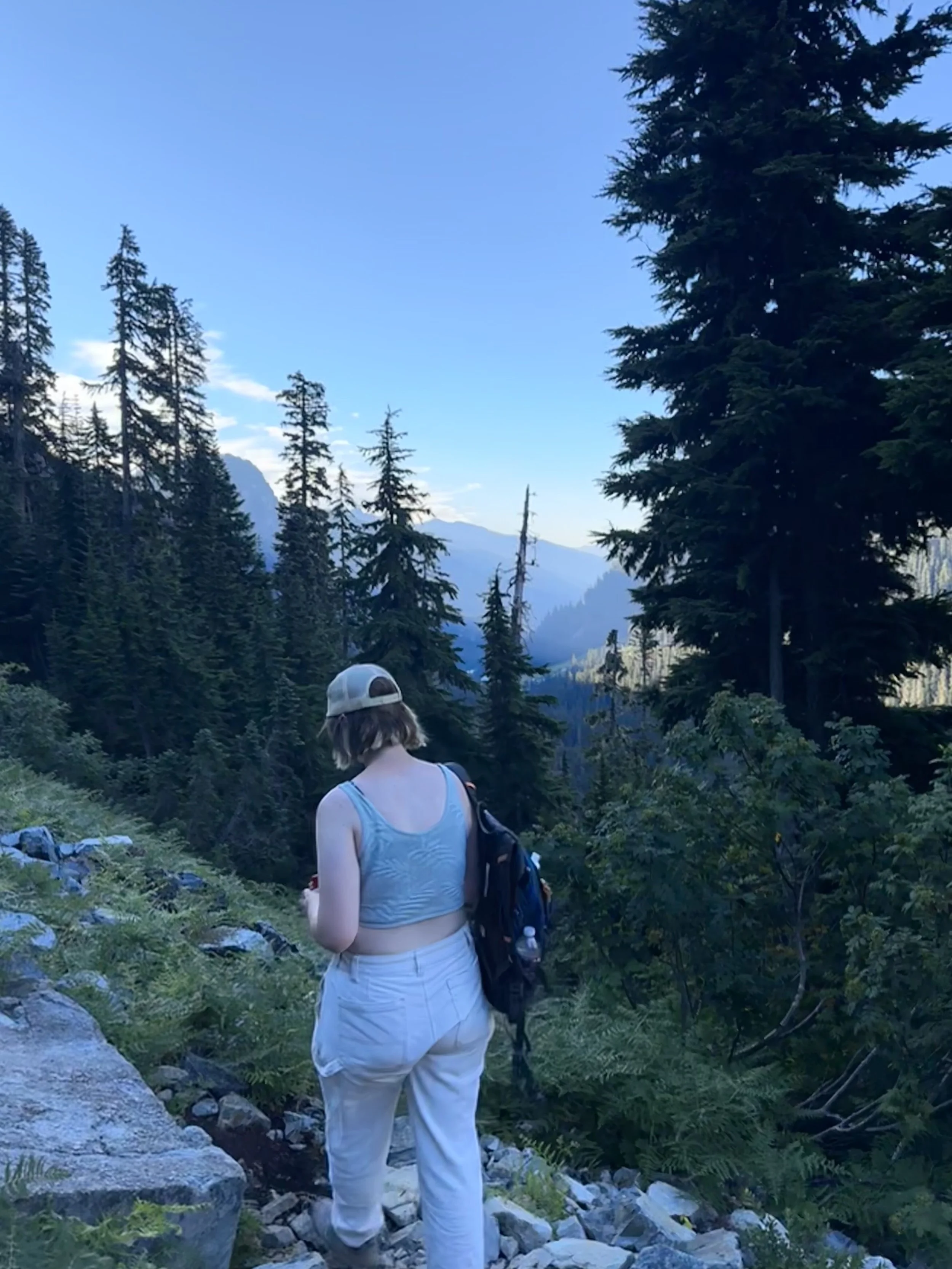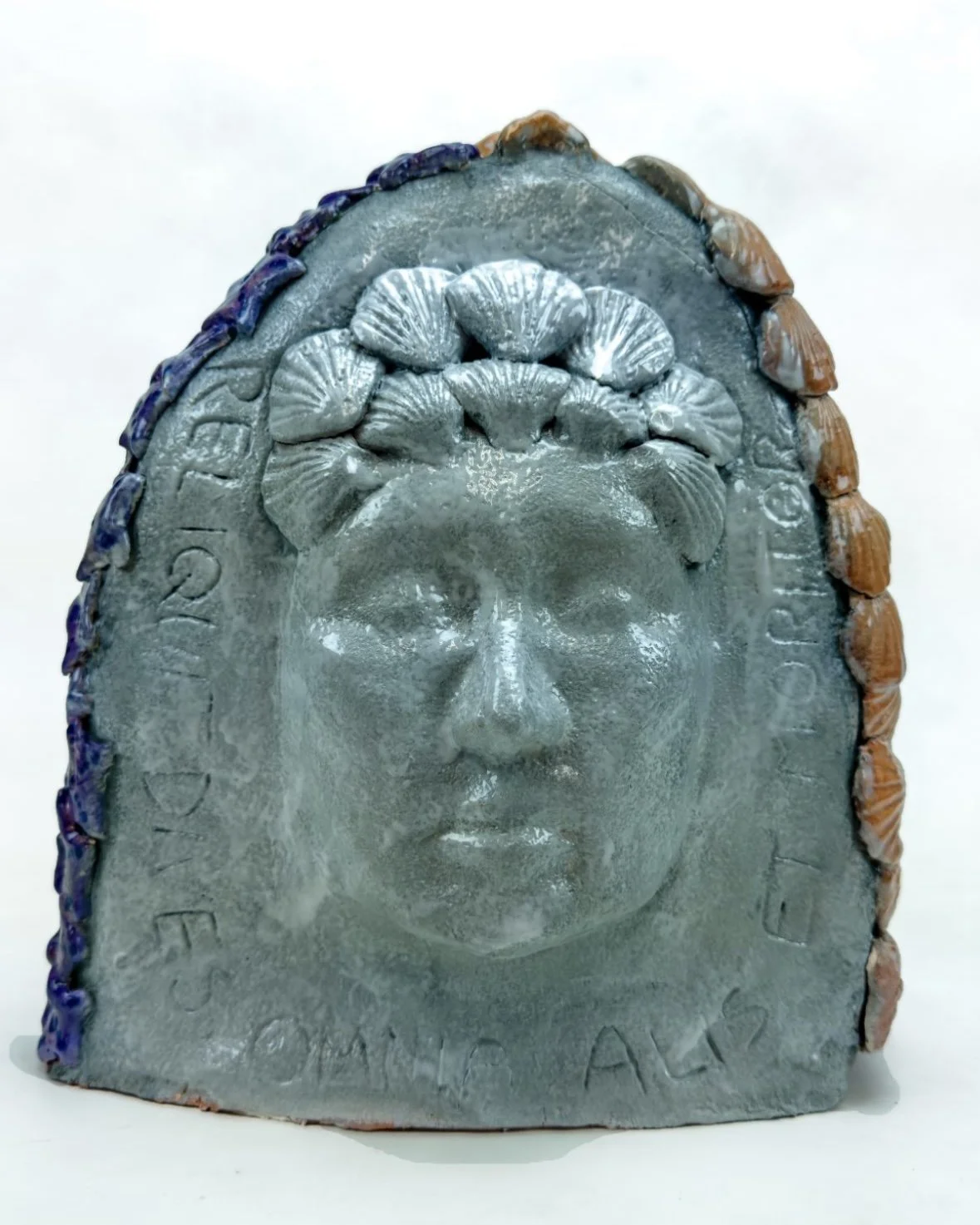Staff Highlight: Zoe Maris
/Zoe maris
Rain City Clay is lucky to be staffed by a group of dedicated ceramicists who work diligently to keep the studio running, who teach with passion and exuberance, and engage and build community through clay. In addition to all that they do at RCC, they also have their own clay practices, either at RCC or off-site, where they make their own work and grow their skills. Each month we will be featuring one of our fantastic staff members and their talents.
This month we are highlighting marketing manager and studio technician Zoe Maris (she/her)!
Zoe Maris’s Bio:
Zoe Maris is currently attending the University of Washington pursuing a Bachelor of Arts in 3-Dimensional Forum (3D4M) and is considering double majoring in education with a focus on early childhood development. Raised in the Snoqualmie Valley, Zoe has shown an interest in art from a young age—attending community art classes and local clay events. She balances her love for the arts with her love for nature, video games, and discovery. A habitual hobbyist, Zoe has dabbled in a variety of interests as manager of a coffee cart, a mushroom forager, an agriculture field worker, a summer camp instructor, a game programmer, a vintage lighter repairer, an actress, a baker, and is attempting to brew her own kombucha for the first time. If you have any fun facts or hobby recommendations, she would love to hear all about them!
Get to know Zoe!
What are you looking forward to as the RCC marketing manager?
I am looking forward to further developing both my skills as a marketing manager and my connection with the local clay community. This is the first time I have been able to incorporate my love for clay into my job and I am so excited to learn and grow in this role!
When do you feel most inspired?
I feel most inspired when I am in nature! I love the flora and fauna of the Pacific Northwest—whether its eating some amazing smoked salmon and Dungeness crab on the Olympic Peninsula, white water rafting in the Cascades, or even just watching the small family of rats that live outside my bedroom window. I am also a big horror fan and have found myself consistently inspired by the works of Junji ito, Wrong Organ, and pretty much any sci-fi/horror media that questions what it means to be human.
Do you like to listen to music or podcasts in the studio? If so, do you have a playlist or favorite musician, or show you'd like to share?
I really like half-watching a movie, TV-show, or even just some YouTube videos while I work. Some of my favorite things to watch/listen to while working in the studio are Arrested Development, Bones, Monk, House MD, and obscure, low-budget movie reviews.
Is there something you’ve wanted to try making that you’ve never made before or haven’t made in a long time?
Since my access to clay has largely been determined by my enrollment in ceramic courses which tended to have more abstract prompts, I feel like I haven’t gotten to explore more “functional” clay pieces. I would love to create some fun looking fermentation jars or garlic holders. I am currently scheming of ways to improve upon the classic mug so that the drink stays warmer longer and if you have a spoon in the mug, it won’t collide with your glasses.
Can you share a "happy accident" moment during your clay journey where an unexpected outcome turned into a unique and exciting element in your artwork?
I was trying to make a giant fish coming out of the ground for a ceramic class and realized far too late into the process that I had absolutely zero understanding of how fish look. The project involved sprig molds and since I had already made a bunch of nautical-themed sprigs, I decided to cut my fish in half vertically, cover the rounded side with the sprigs, and then add a statue-like face to the flat side. This ended up creating this piece which almost looks like an artifact—a piece of something much larger that has been worn down and transformed by the sea. While the end result looks nothing like a fish, I ended up being satisfied with the overall story of the new work much more.
If you could have a clay-making superpower, what would it be?
The ability to control the “wetness” or moisture of any piece of clay I am working with. If I could immediately have plastic clay become leather-hard or make bone-dry clay plastic again at the snap of my fingers, I feel like I could fully harness clay’s full potential. At the very least, I wouldn’t have to worry as much about keeping my pieces wrapped in plastic.
How long have you been working with clay?
Technically, I have been working with clay for 14 years, but I wasn’t always as big of a fan. I was lucky enough to have a local art center which offered youth classes which allowed me to explore hand building, coils, the classic pinch pot, and the wheel. I really struggled as a kid with using the right amount of water. My pieces always ended up super soggy because I loved how smooth it felt and by the end of class I would be so confused as to why my creation had melted. Any chunk of clay that was put on my wheel would turn into sludge and I would end up with these super tiny pots. After elementary school, I moved away from clay and experimented more with drawing, painting, and acting/set-building. It wasn’t until my freshman year of college that I reacquainted myself with clay and have been enamored with it ever since. I still have two of my little pots to remind myself of how far I have come and to encourage me to try things again—even if I struggled in the past.
What valuable lessons have you learned along your artistic journey that you wish you knew when you first began?
Learning to take a step back and view your work from afar has been monumental in my artistic journey. Sometimes, I get snagged and dragged down by little details. I’ll keep editing and tweaking things—trying to get it “just right”. One time, while I was deeply wrapped up in the specific curvature of the tail of this lizard I was making, my teacher picked the piece up, walked a few steps away, and asked me to look at it. It was so simple, but it completely snapped me out of my detail-driven spiral. Suddenly, I realized that the curvature didn’t matter as much as I thought. I had spent so much time staring at this one little section of the piece that I had forgotten the bigger picture. Now, whenever I find myself drowning in the details, I take a step back (either figuratively or literally) and consider how the details I’m stressing over contribute to the bigger picture.








